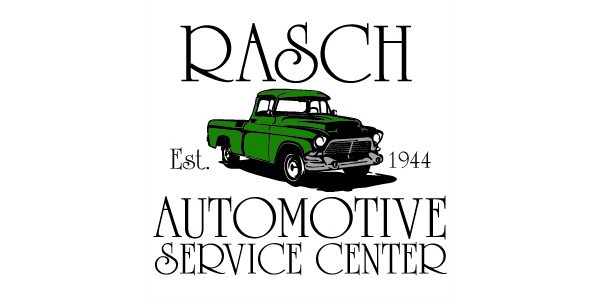The importance of Engine Oil Maintenance
Oil is the most critical component in the operation and longevity of the engine in a vehicle. Oil’s job encompasses so many things in an engine, from lubricating vital moving parts, to suspending and removing dirt, to keeping the engine cool. It is also charged with operating actuators within the engine for things such as disabling cylinders for better fuel mileage and changing valve timing for power when you need it and to reduce harmful emissions coming out of the exhaust system. Using the wrong engine oil can actually poison a catalytic converter. As you see, Engine Oil has a very important job and the cleanliness of it is so important.
Every vehicle manufacturer has formulated their own specifications for engine oil depending on the engine they use in that vehicle. The manufacturer posts that specification and it is imperative that your Automotive Service Facility uses engine oil that meets or exceeds that specification. And, just because a bottle of oil states it is 5w30 engine oil, it might not be the correct 5w30 engine oil for your vehicle. Yes, that’s correct! There are other specifications within the same weight of engine oil. It is very important that the Service Facility installs the correct oil for YOUR make of vehicle.
How does the oil get dirty? When you start your engine, there is combustion that takes place inside the engine. That is how your engine runs. Fuel and air mix inside the engine and the spark plug ignites this mixture causing an explosion inside the engine. On a 4 cylinder engine, this happens 4 times every engine revolution. So when you are idling your car, the tachometer is showing about 600-700 rpm (revolutions per minute). That is causing about 2400-2800 explosions a minute inside the engine. Every explosion means the air/fuel mixture is burning and the spent by-products (smoke) are sent out of the exhaust system. But, not all of the air/fuel mixture burns. And, that spent “smoke” does not all make it out of the engine and into the exhaust system. Some of the spent “smoke” and un-burnt fuel go down past the pistons and into your oil. This process, along with moisture from condensation, form acids in your oil. After getting your vehicle up to normal operating temperature, the heat along with the engine oil additives reduce the amount of acids and moisture generated by the running of the engine. And the engine oil of today does a real good job reducing these acids and suspending the dirt and particles so they can be filtered through the oil filter. But, after a while, the additives in the oil wear out and the accumulation of these acids lead to the formation of sludge and sludge is a killer to an engine. Sludge clogs up the tiny orifices that an engine uses to direct engine oil to lubricate engine components and feed the actuators that allow an engine to operate.
Now most engine oils can go a long way before needing to be changed. Some manufacturers have oil change intervals of 15,000 miles or more. Most have 5000 – 10,000 miles intervals. And the oil can last that long in OPTIMAL conditions. But, optimal conditions do not really exist. Optimal conditions are driving at highway speeds, in the perfect temperatures and conditions. In my opinion, vehicle manufacturers use these long oil change intervals to decrease the posted cost of maintenance on their vehicles. This is a selling point for a new vehicle. Decrease cost of maintenance equals decrease cost of ownership. This increased interval is enough to get them out of the manufacturer’s warranty. The damage to an engine from these long intervals takes a while to occur, usually when the vehicle is just out of warranty. A lot of manufacturers have realized this and have subsequently decreased these oil change intervals, though in my opinion, not enough.
And another thing about long intervals. All engines burn a little oil. Some use a ½ quart in 5000 miles but others might use 1 quart every 1000 miles. Some manufacturers engineered an oil level sensor to alert the driver if the engine was low on oil. . The sensor alerts the driver with an amber colored warning light in the instrument cluster if the engine is 1 or 2 quarts low. The majority of manufacturers rely on a loss of oil pressure to turn on a red warning light. This light comes on when the oil is low enough that the oil pump pickup tube can’t suck up oil to feed the engine. Oil pressure drops and the light comes on. Usually, when the engine only has a quart or two of oil in it. By that time, significant wear or catastrophic failure occur. Not only does the engine use oil pressure, but it also relies on the splash of internal moving parts to lubricate pistons and the walls that surround the pistons, timing components, etc. When an engine is low on oil, it doesn’t create enough splash to lubricate these items.
If your vehicle burns or leaks oil in between oil changes and the oil’s left un-checked, there isn’t going to be much oil left in the engine. We see this happen every day where a vehicle has no oil showing on the dipstick when brought in for service. That means that the engine is at least 2 quarts low. It is so important to check the level periodically to get an idea of how much oil your vehicle’s engine is using. This is especially important when on a trip driving at highway speeds where the engine is running at a higher RPM and engines tend to use more oil. Just check it when getting gas. Then, after a few times, you get an idea if it needs to be checked more or less often.
Our clients who drive about 10,000 miles a year (average) or more, our recommendation for every vehicle is 5000 mile oil change intervals.
For the person who only drives shorts distances, to and from the grocery or doctor’s office or who never gets their vehicle up to operating temperature, we recommend going by the 6 month interval regardless of what mileage is on the sticker.
At Rasch Automotive Service Center, we recycle used waste oil. And, when changing the oil on our client’s vehicles, we use only synthetic engine oil with specifications recommended by the manufacturer. Synthetic engine oil has superior low-temperature properties, better high-temperature stability, lower volatility, longer oil life and responds better to additives compared to conventional oil. Plus, the lower friction nature of synthetic oils results in higher fuel economy compared to the same weight as conventional oil.
In conclusion, an Oil Change Service for your vehicle is inexpensive insurance. Today’s engines will last a very long time if maintained properly and frequently. It is amazing the difference we see when someone takes a proactive approach to vehicle maintenance and how many miles they can get out of their vehicle as opposed to someone who isn’t. In all the studies I have read and in my experience of owning an automotive repair shop, it is much less expensive to keep your vehicle maintained and repaired than it is to buy a new vehicle. The average new vehicle costs about $40,000. Add to that the cost of depreciation, added insurance, added personal property taxes and the fact you still have the cost to maintain that new vehicle. And, that vehicle drops in value roughly 15% – 20% just driving it off the dealer’s lot.
Take care of your car and it will take care of you.

